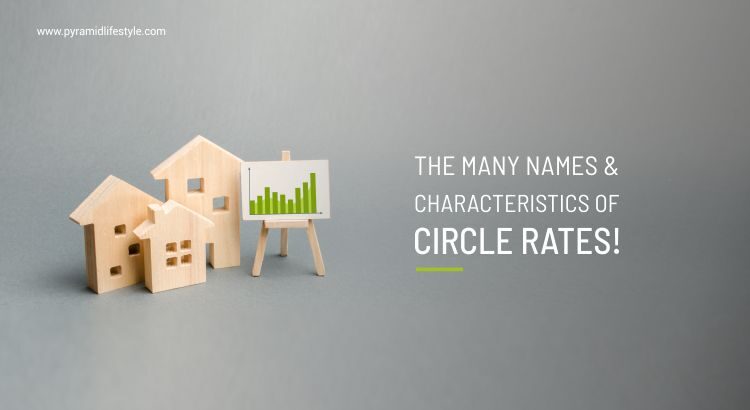Circle – has many connotations. It has a spectrum of connotations in symbolism, mathematics, science, art and literature. The same goes for the terms used in businesses. Many terms in the real estate industry seem to vary from one region to another. This blog will elaborate specifically on the term – Circle Rate, and what it means exactly.
The basic definition
Just like every product has an MRP when it comes to property buying, there’s a minimum value assigned to a particular property. That minimum value is known as the “Circle Rate”. Now you get it why your broker always nagged about the circle rates and how it affected the budget of his clients.
The circle rates are usually defined by the state government’s revenue department or the local development authorities. Within the same city, there can be different circle rates based on different localities. The primary objective of having a circle rate is to keep a check on the property prices because the real estate market is skeptical when it comes to being transparent in offering a precise price index. So, what are the other names of Circle Rate?
The many names of Circle Rates
Just like different cities, different states and different regions have different names for obvious reasons, circle rates are also called with different terms. When you are in Maharashtra, circle rates are known as ready reckoner rates. In the Northern states of Harayana, Punjab, and Uttar Pradesh, they are known as collector rates or district collector rates. Come to Karnataka and they have a fancy name for it – guidance value. There must be a concrete reason as to why the names are so different. Many times, these rates are confused with ‘market rates’.
The differentiating characteristics
While ascertaining the circle rate of a particular region, the administration considers the actual market value at which the property is being sold. That’s the market rate. It is always expected that the market rate and circle rate are as similar as possible. But, why are these circle rates so varied? For instance, the property market in Hinjawadi has a different circle rate as compared to Bhugaon. The average price per sq.ft in Hinjawadi ranges somewhere around INR 5,900 whereas the starting range for the Bhugaon property market is approximately near INR 3,400. The reason for this being – Hinjawadi is an IT hub, houses many IT professionals who are capable of paying the premium for staying close to their workplace.
It is not practically possible to keep the circle rates fixed as the real estate market, by nature, is volatile and subject to change. Therefore, the circle rates are often revised every quarter or once in six months. This allows to stay in tune with current market trends and helps the state government to generate higher tax collection from property transactions.
For the buyer
Before finalizing any property, the buyer should first take one good look at the circle rates that are revolving (pun intended) in that area. Also, considering the market rate will give the buyers a fair idea about their buying capacity and it will also enlighten them about the potential for appreciation in the future.
One important thing the buyers should make note of – always keep a check on the difference between market rate and circle rate in the past and current scenarios. A lower gap between them indicates that it is beneficial hence home loans are provided based on sale deed which is closer to circle rates.
At Pyramid Lifestyle, we ensure that you own more than just a property with us. We make sure you own and take pride in possessing the knowledge related to the real estate industry as well. The luxury of being informed is the greatest as compared to any luxuries in the world. All our consistent endeavours lead towards making this thought possible for every customer who wishes to be a part of the Pyramid family.


